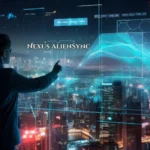Leadership in education is shifting with the rise of digital advancements. Today’s leaders need more than traditional skills – they must embrace technology to inspire, guide, and adapt effectively.
This article explores how educators can develop the tools needed to navigate these changes while strengthening leadership capabilities in an increasingly digital world.
Building Digital Literacy for Today’s Educators
If you’re pursuing a career in teacher leadership, a program like Specialist in Education (Ed.S.) in Teacher Leadership will help you to deepen your instructional and leadership expertise beyond the master’s level. In this modern age, you also need to enhance your digital literacy.
Educational leaders today must navigate new tools, platforms, and strategies. This isn’t just about knowing how to use tech – it’s about applying it meaningfully to improve learning outcomes.
Digital literacy means understanding how technology integrates with teaching practices while staying updated on emerging trends.
Strong foundational skills empower educators to choose the right tools without feeling overwhelmed or falling behind.
Examples of essential areas include:
- Understanding data privacy policies and ethical considerations.
- Familiarity with Learning Management Systems (LMS) like Google Classroom or Moodle.
- Using analytics tools for student performance tracking.
- Applying online collaboration methods that engage students effectively.
Building these skills makes leading others into tech-driven education environments less daunting.
Leveraging Technology to Foster Collaborative Learning Environments
Technology is reshaping how educators and students connect. For leaders, this means facilitating environments where collaboration thrives, both in-person and online.
The goal isn’t simply adding tech for its own sake. It’s about fostering teamwork among students and staff through meaningful use of digital tools.
A collaborative environment encourages shared learning experiences. Leaders can harness technology to ensure engagement remains high while accommodating different needs within their educational communities.
Some key methods include:
- Using video conferencing tools for virtual meetings and discussions.
- Encouraging the use of shared documents for real-time collaboration on projects.
- Integrating discussion boards or forums into coursework using digital platforms.
- Implementing group-focused activities through apps that support creativity and interaction.
When used well, technology transforms classrooms into spaces where everyone contributes meaningfully, building a culture of trust and collective problem-solving skills.
Adapting Decision-Making Strategies in the Face of Digital Challenges
Leadership decisions today often intersect with rapidly changing technology. Educational leaders need to approach decision-making with flexibility and foresight, especially when digital challenges arise.
Technology demands fast but informed choices. Leaders must assess how new tools align with their institution’s goals, budget constraints, and the overall impact on students’ learning experiences.
To adapt effectively, focus on these strategies:
- Developing a clear process for evaluating emerging technologies before implementation.
- Prioritizing feedback from educators and students to understand actual needs.
- Considering long-term scalability rather than short-term fixes.
- Remaining updated on tech trends through professional development opportunities or networking events.
By making thoughtful decisions instead of reactive ones, leaders create stability during transitions while ensuring that digital innovations genuinely enhance education rather than distract from it.
Encouraging Professional Development for Emerging Tech Trends
As technology evolves, staying current isn’t optional – it’s essential. Educational leaders must prioritize professional development to equip themselves and their teams with skills to navigate new tech effectively.
Professional growth in this area ensures educators feel confident adopting and applying emerging technologies within classrooms. It also fosters a culture where ongoing learning becomes part of the institution’s values.
Key approaches include:
- Organizing workshops or training sessions focused on relevant digital tools and applications.
- Encouraging participation in online courses that specialize in educational technology trends.
- Facilitating peer-to-peer knowledge sharing through mentorship or collaborative projects.
- Providing access to webinars, articles, or research that explore future technological possibilities for education.
When schools invest time and resources into continuous learning opportunities, they empower leaders and educators alike to adapt seamlessly as new challenges arise in the ever-changing digital landscape of education.
Balancing Tradition with Innovation in Educational Systems
Education thrives when traditional methods and modern advancements work together. Leaders must strike a balance, preserving what works while embracing innovation to enhance learning.
Technology should complement proven teaching practices, not replace them entirely. This requires careful integration of digital tools into existing frameworks to maintain educational continuity.
To achieve this balance, consider these strategies:
- Evaluating how new technologies align with established curriculum goals.
- Incorporating technology gradually to avoid overwhelming staff or students.
- Recognizing the value of hands-on activities alongside digital ones for holistic learning experiences of education leadership.
- Maintaining open communication with educators about which traditional methods still resonate strongly within their classrooms of education leadership.
By blending time-tested approaches with innovative solutions, leaders create an environment that remains adaptable for future demands – ensuring education evolves without losing its core principles.
The Bottom Line
Digital advancements demand educational leaders who balance innovation with tradition, fostering collaboration and continuous growth.
By building digital literacy, adapting strategies, and embracing professional development, leaders can confidently guide their institutions through challenges while enriching the learning experience for all.







